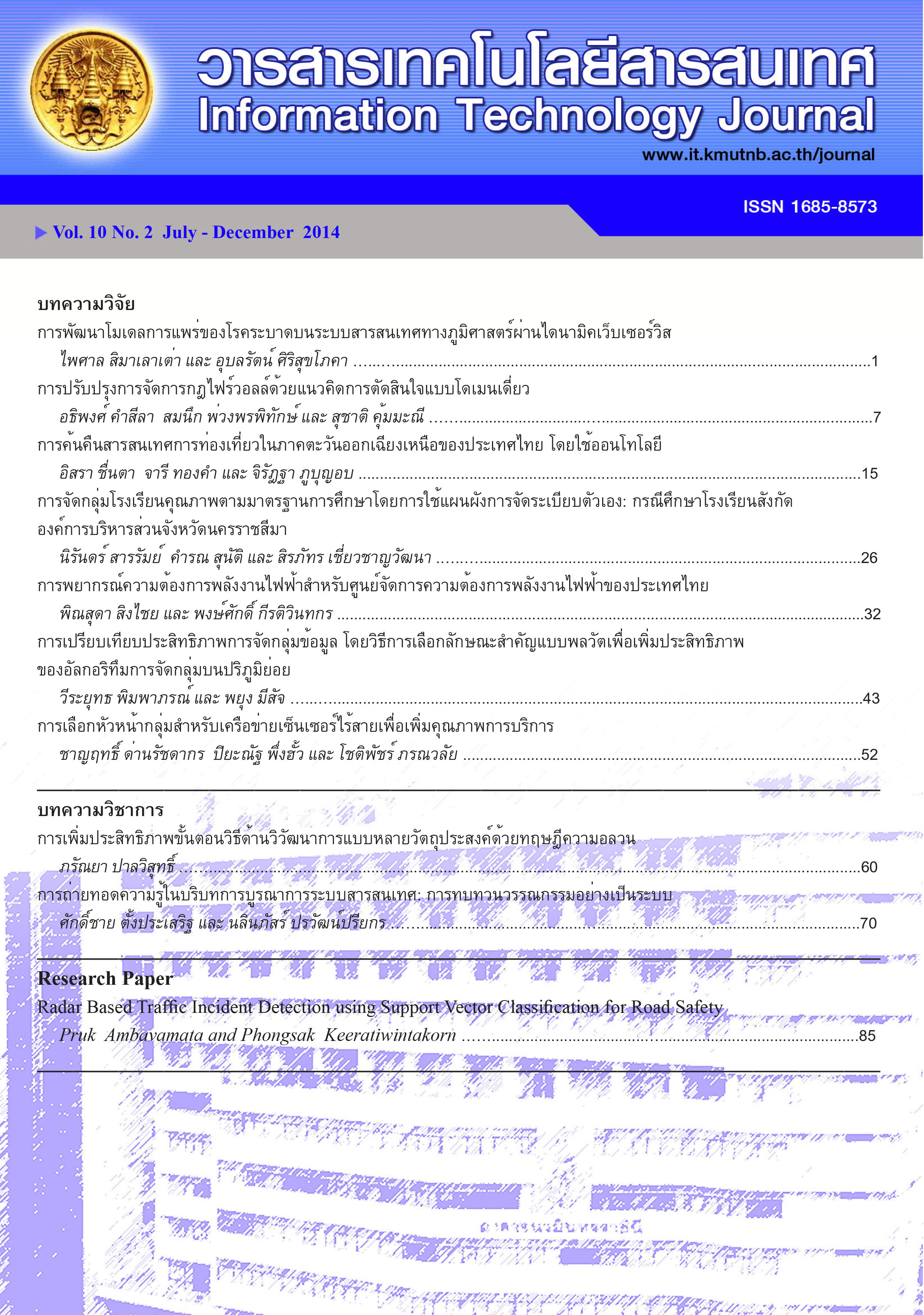การจัดกลุ่มโรงเรียนคุณภาพตามมาตรฐานการศึกษาโดยการใช้แผนผัง การจัดระเบียบตัวเอง: กรณีศึกษาโรงเรียนสังกัด องค์การบริหารส่วนจังหวัดนครราชสีมา
Main Article Content
Abstract
การจัดการศึกษาไม่ได้คุณภาพตามมาตรฐานนั้น เป็น ปัญหาสำคัญในการบริหารเนื่องจากโรงเรียนไม่ทราบจุดอ่อน และข้อบกพร่อง จึงอาจทำให้การบริหารการศึกษาอาจเกิด ความล้มเหลวได้ งานวิจัยนี้ได้นำเสนอการจัดกลุ่มโรงเรียน คุณภาพตามมาตรฐานการศึกษาของกลุ่มตัวอย่าง 58 โรงเรียนโดยการใช้แผนผังการจัดระเบียบตัวเอง (SOM) เพื่อให้สถานศึกษาทราบปัญหาและจุดบกพร่องเมื่อเทียบกับ สถานศึกษาอื่น โดยจะแสดงเป็นแผนภาพเสมือนข้อมูล (Data Visualization) ซึ่งจะบอกถึงคุณภาพของสถานศึกษา ในแต่ละมาตรฐาน พร้อมทั้งบอกถึงกลุ่มของสถานศึกษาว่า อยู่ในกลุ่มใด โดยการนำเอาค่าเฉลี่ยของคะแนนแบบอิงเกณฑ์ และอิงสถานศึกษาจากการประเมินของสำนักงานรับรอง มาตรฐานและประเมินคุณภาพการศึกษา (องค์การมหาชน) รอบที่ 2 ซึ่งมี 14 ปัจจัยจาก 3 ด้าน คือ ด้านผู้เรียน ด้านครู และด้านผู้บริหาร จากการทดลองพบว่าโรงเรียนกลุ่ม ตัวอย่างส่วนใหญ่อยู่ในกลุ่มดีซึ่งมีทั้งหมด 22 โรงเรียน และโรงเรียนที่อยู่ในกลุ่มที่ต้องปรับปรุงมีทั้งสิ้น 6 โรงเรียน โดยภาพรวมของกลุ่มสถานศึกษาตัวอย่างทั้ง 58 โรงเรียน มาตรฐานที่ต้องปรับปรุงคือ มาตรฐานที่ 5 ผู้เรียนมีความรู้ และทักษะที่จำเป็นตามหลักสูตร และมาตรฐานที่ 8 ครูมี คุณวุฒิ ความรู้/ความสามารถตรงกับงานที่รับผิดชอบ และครูเพียงพอ
Clustering School by Quality Education Using Self-Organizing Map : Case Study School Under the Jurisdiction of the Nakhon Ratchasima Provincial Administrative Organization
Nirun Sararum, Khamron Sunat and Sirapatch Chiewchanwattana
Under standard education management is a major problem to administration due to the lack of information related to school’s weaknesses and shortcomings. This may lead to failure in running a school. This paper presents the investigation on the categorizing of the 58 schools using Self-Organizing Map (SOM) in order to study the issues of weaknesses and shortcomings compared with other educational institutions. The findings are presented in form of Data Visualization, reporting the quality of education in each standard including level of standard each school was attached with. This was done by using the average score based on the criteria and on the assessment of the Office of Education Standards and Quality Assessment (Public Organization) in the second round. There were 14 factors from three aspects namely, the students, the teachers and the administrators. It was found that from the total of 58 schools, 22 schools were rated in the high-quality group while 6 were rated as needed improvement. Three standards were found to be under average and need improvement. These were Standard 5 which was about knowledge and skills of students; Standard 8 concerned with teachers qualifications / knowledge and ability to meet the responsibilities and also the adequate number teachers.

